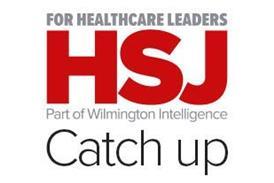Procurement within the NHS is currently not what it should be, argues Chris Doyle, who says the health service needs to aim higher if it is to remain free at point of use

This article was part of the eProcurement channel, in association GS1. The channel is no longer being updated.
To the untrained eye, it can sometimes seem like nothing ever changes in the NHS. Yet, as those of us involved in the UK healthcare industry know very well, change is a constant.
This is a fairly remarkable fact given the size and scope of the NHS: it’s the world’s fourth largest employer, dealing with 1 million patients every 36 hours.
It is especially true when the government, pushes through major changes in process that allow only a short timeframe for trusts to reach compliance, and many could be forgiven for dismissing the plans as being a little too ambitious.
The e-procurement strategy, published in May 2014, represents one such major change.
‘It is time for big ambitions in the NHS’
The strategy estimates that trusts can save £1.5bn by the end of 2015-16 through a cohesive approach to procurement based on global GS1 standards, national infrastructure and local delivery.
The strategy’s aims may be ambitious, but it is a time for big ambitions in the NHS as it seeks to overcome the wide array of challenges that threaten its future as a free at point of use health service.
Problems with procurement
So why has procurement been identified as such a key area for trusts to improve their performance? The simple and rather obvious answer is because it is an area in which the NHS performs particularly badly at the moment.
To put it in perspective: imagine if there was a procedure taking place every minute of every day in the NHS and that this procedure was being undertaken in a way that was inefficient, ineffective, unduly costly and dangerous.
‘The current “purchase to pay” procedure is not efficient’
It is unquestionable that we would all want such a procedure to be improved immediately.
The alarming thing is that such a procedure does exist: it is called “purchase to pay” and everyone in the NHS is responsible for its efficiency, or lack of, one way or another.
Everything the NHS uses, from the services of a landscape gardener to the installation of a prosthetic hip, goes through the purchase to pay procedure.
A need arises for the thing, someone recognises that need, then someone buys something to fulfil that need and pays for it.
‘All the NHS’s non-pay spending is estimated to be around £30bn annually’
Irrespective of what that specific thing may be, the process must take place: identify need, identify solution, purchase solution, deliver solution and pay for solution; taken as a whole, this is what purchase to pay means.
It applies to all the NHS’s non-pay spending, which is thought to amount to around £30bn each year. Note that this is a rough estimate as – perhaps even more alarmingly – no one can definitively say what the actual figure is.
Be ambitious
That phrase “all the NHS’s non-pay spending” is important because it defines the ambition of the e-procurement strategy. It refers to every bit of spending: capital (a new MRI machine), pharmaceuticals (a box of paracetamol, a syringe of enoxaparin), devices (a hip, a breast implant, an IVD), every bit of consumables spending (swabs, sheets, paper), every bit of agency staff spending (£2.4bn in 2013); all of it.
It seems incredibly ambitious, but when the procedure in question is inefficient, ineffective, costly and dangerous, it is necessarily so. But can it succeed?
Well, yes actually. We are all fully aware of how hard change can be, but it can and does happen when it needs to. Consider the switch from coronary artery bypass graft to percutaneous coronary intervention that has happened in the last 20 years as a precedent; this required huge investment, but it was successfully driven through because it was the right thing to do.
The pressing requirement for this change had become very apparent and the NHS and its supplier base responded to this obvious need for change with a speed and alacrity that is unmatched, even in the business world.
GS1 UK hosted a healthcare conference in Loughborough in June focusing on the requirements of the e-procurement strategy. At this conference, the national director for NHS procurement, Rob Knott, spoke about the potential backlash to the government’s decision to mandate the use of GS1 standards. Or rather the lack of it. The Department of Health communicated the mandate to all trust boards, and not one questioned the decision or complained about it.
Widespread change will always pose a challenge for an institution the size of the NHS; what this suggests is that everyone recognises that now is the right time for it to have big ambitions.
Chris Doyle is head of healthcare for GS1 UK






















1 Readers' comment